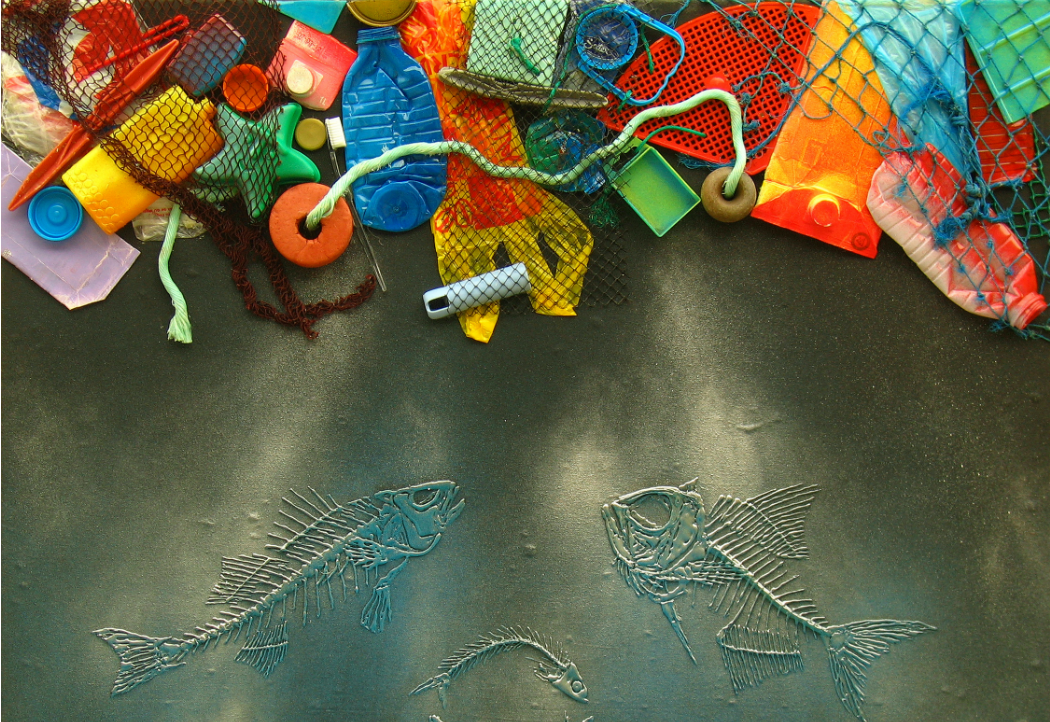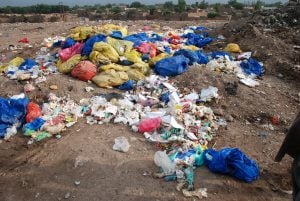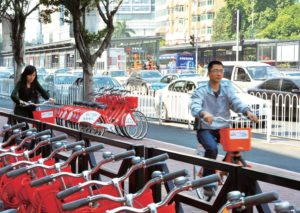With all the effort going into recycling, Europe is still only reaching a 30% recycling rate for plastics, and the US trails way behind at 9%. And this was before China stopped processing the West’s recycling! Why are these numbers so low? Why is plastic recycling so complicated?
Guests
- Doug Woodring, Ocean Recovery Alliance
- Michelle Jou, Covestro
- ilippe Li, HK Recycles
More from this series
The 'Eight Million' podcast launches
Podcast: Cleaning up China’s rivers
Podcast: Sorting out China’s plastic waste
Transcript
Marcy: This is Eight Million – a podcast series that looks at the eight million metric tonnes of plastic entering our oceans every year – and what role China plays in addressing this global challenge. Eight Million is produced by Sustainable Asia and its partners China Dialogue and Aya Recording Studio.
Marcy: Previously on Eight Million
Marcy: In 2015 China bought 50 million metric tonnes of solid waste
Mao Da: 它赶不上垃圾产生的速度和产生的量…
Voiceover: We can’t keep up with the flow of garbage in China
Marcy: The new ban means that global exporters of waste can no longer send bales of solid waste to China
Mao Da: 就是环境污染产生的外部化不能够再继续…
Voiceover: The exporting of environmental pollution can’t be continued
Marcy: Hi. This is Marcy Trent Long. I have lived in Hong Kong for the past 20 years and watched the increasing amount of disposable plastic really alter the fabric of our oceans and beaches here. As someone who sails and is an avid open water swimmer, plastic waste has really changed the way I look at the quality of life here. And as more of my friends here in Asia start using the ocean as their playground, they too are seeing plastic as an unpleasant and unnecessary result of our convenience-driven lifestyle.
The goal of this podcast series is to reveal the inner workings of plastic waste management in China – so that I can make some sense of the impact that China is having on ocean plastic. In this episode, I want to look at recycling.
So first let’s talk to Doug Woodring, an environmental entrepreneur and co-founder of Ocean Recovery Alliance. Based here in Hong Kong, Doug started working with the United Nations years ago to try to solve the problem of Ocean Plastic, and in the process has become an expert on the global recycling market.

Doug: The challenge is that the waste systems today globally mostly are not prepared to handle the myriad of plastics in the waste stream. 30 Years ago they could handle paper and metal and glass and organics in an easier way. Now you mix it with plastics it becomes much harder to deal with these very lightweight permanent type flexible materials.
Marcy: And there are just too many varieties of plastic. There’s 40,000 types!
Doug: 40,000 that is only the number today. That is not including all the nanotechnologies and materials that are coming our way. […]
But 40,000 lives in 7 families. So there is….if you see on bottom of materials there is often 1234567. And those categories can more or less be recycled in their own genres, if you will – flavours or families, if you can get them together. The problem is you can’t put them all together normally, unless you use a new technology that does mixed plastic recycling.
Marcy: OK. You can’t recycle all plastic together -and many products use 3 or 4 kinds of plastic in one package. But how did we get to 40,000 different types?!
Doug: So how did we get there? Partly through the effort to reduce climate change – an unintended consequence, because everyone wants lightweight. Lightweight this lightweight that; transportation costs less, and by doing that the only material you can go straight into is plastic.
Marcy: By using plastic in cars and planes, they become lighter and use less fuel, But while lighter plastics are helping the environment in one way, they make recycling a hassle, and often just not worth the effort. Because plastic recyclers get paid per tonne of material –
Doug: Imagine plastic bottles, unless you shred them or compress them in higher pressure, they are just a big mass of air wrapped in plastic. So when you have 40,000 bottles which is more than one tonne, it would more than fill this room in space, but it is only one tonne of material. I you have one tonne of metal or wood right here it would be one cubic meter or something like that. So we also have to think about this challenge of space, with such very lightweight material. That’s what’s causing the low recycling rates generally.
Marcy: So recyclers are struggling with an increasing variety of plastics, for which they need to find resale markets, and on top of that these plastics are also becoming increasingly light, giving them more work for less money. It is no wonder the developed world was outsourcing this thankless job to China!
So how can we make recycling more efficient? Hong Kong recycler Philippe Li talked to me about this. He runs a social enterprise collecting recyclable waste in the city, but his business has taken a hard hit with China’s new ban. He still believes recycling is the way to go, but some things will need to change. For a start, the public will need to be educated even more about how to recycle plastic.
Philippe: Because the landscape is always changing there’s always materials that you can recycle at this moment in the time but at the next moment in time you can’t recycle it. And then […] as a recycler we might have to inform them about these changes. That is part of the education process and the feedback process that is so valuable. And also in terms of you know, the fundamentals, knowing what types of plastics can be recycled or can’t be recycled. […] So there’s these basic things that people need to understand first, before we can make this system efficient. This has to be taught […] when you’re young. It has to be a habit.
Marcy: Food remains in the recycling bin, for instance, is one of the things that gives the industry a headache!
Doug: The problem with recycling plastic is the cost and the sorting and the cleaning. So if you get it in the first mile, clean from your house, there is much more chance that either the unregulated waste pickers or the very advanced shredders and entrepreneurs are going to get that material and make use of it. And that is a global change that could happen with two quick ideas: wet and dry.
If you sort things just by making two decisions: wet and dry. You will then be able to take all of the material – plastic, paper, metal, glass – as dry, because it isn’t covered with grease and food waste and chicken bones.
Marcy: And as Philippe told me, the recycler then just needs to crush and shred it, before it can be recycled. As long as separating wet and dry waste remains the job of the recycling industry, it will be more profitable to ship the waste off to a developing country.
But consumers are not the only ones who need to change:
Doug: You have the marketing and design guys who want differentiation. I want my bottle to be red, yellow, blue, and the sizes will be a bit different, and then you mix materials and that is where you get into this disaster zone of recycling.
So there is no standardisation laws on material use, and there is not enough design thought put into the afterlife of that product, and how to take it apart. If you put all these rivets and little things, and electronics… you could shred it, and that is a way to get stuff separated, but a lot of countries don’t have that capacity. So we build these things but we don’t think about how to get them apart again and get the different material types into the seven streams of families.
Philippe: If you look at bottles, they consist of around three types of plastics. The lid, the bottle and the label so and that is what makes it so difficult to recycle. Because in one product there’s different types of plastics. So what if you can just use one type of plastic for the product. A shampoo bottle has the metal spring for the […] lid and there is the tube and there is the bottle, so there’s at least three components there. So in Hong Kong some people actually recycle it by breaking it down manually, taking the lid off, taking off the metal […] spring and then that spring is recycled separately. The tube going down to the liquid is recycled separately. And then the bottle itself. So if you design a product that uses one type of plastic or material that makes it really simple.
Marcy: This is called “Designing for Recyclability” and it’s a hot topic in the world of plastics. Philippe mentioned redesigning the plastic bottle so it’s all made of one type of plastic. Another way to rethink our use of plastic is by limiting the material to long-term products. Strong, durable plastic has a higher value to recyclers, and is much less likely to end up on a dump or in the ocean. I spoke about this with Michelle Jou, who lives in Shanghai, where she runs the Polycarbonate Business Unit of plastics giant Covestro.
Michelle: The polycarbonate is different from the single use plastic like plastic bags or straws. Our plastics are high end engineered plastics that are used for much more higher end and long lasting applications.
Marcy: Think for instance of the big plastic bottles you see in office water coolers.
Michelle: If you are in China, or you are in Indonesia, people are in need of clean water, and they use a big water bottle. This water bottle is mostly made of polycarbonate, and we recycle the polycarbonate. We take them back and make them into mobile phone housing, or laptop housing or led light.
Marcy: And there is a lot of enthusiasm for this kind of thinking, including in China
Michelle: Our efforts have really been paying off. I think in the last 2 to 3 years, our recycle sales, have more than tripled on a single year basis, because of course the starting point is low, we are really trying to do more going forward.
Marcy: Two years ago Doug took the business forum Plasticity, which he founded, to Shanghai, and was surprised at the keen interest for recyclable design there.
Doug: When I have spoken in China on this topic before, I found people really weren’t aware of it. Because it wasn’t something always talked about in China – there are many other issues… not really this one. So when I talked at a design/fashion event one time, to a full house, people seemed in awe, but they also then were very eager to solve the problem. I found more eagerness then some countries in the west, which are a bit numb to some of this discussion. So that is why we said we need to go to China because they are ready and they want to know how to solve some of these things, but they haven’t been given the information or the ideas.
Marcy: And more companies across China are taking on the challenge. The Chinese government is changing up the country’s waste management infrastructure, and mandating 46 cities to reach a 35% recycling rate by 2020. Given the complicated nature of recycling, and heavy investment required, it’s unsure how these cities will meet that objective. So new ways to cope with plastic waste are being tried and tested. Against the wishes of grassroots activists, but with demonstrable success, the Chinese are building more Waste-to-Energy plants than the rest of the world together.
When I asked Doug about this billion-dollar industry of burning trash, his reply surprised me.
Doug: It is very important. It is absolutely necessary. If we really want to solve the problem of waste getting into our waters.
Marcy: Join me next time, as we explore the world of waste-to-energy.
Marcy: This podcast was brought to you by Sustainable Asia.
Eight Million was produced by me, Marcy Trent Long, and the multi-talented Sam Bekemans.
We could not have pulled this podcast series together without our amazing audio engineers Carsten and Annabat Martens of Aya Recording Studio.
Our logo and social media outreach was by Kinsey Long.
And special thanks to our voiceover artist Keon Lee, audio assistant Daniel Suen, and our wonderful partners at China Dialogue: Isabel Hilton, who helped formulate the idea for the project, Charlotte Middlehurst and Christopher Davy, for their editing skills, and Huang Lushan for stepping in with interviews and translation.
Share this podcast with your friends and colleagues! Education and collaboration are our best path for creating a Sustainable Asia.







